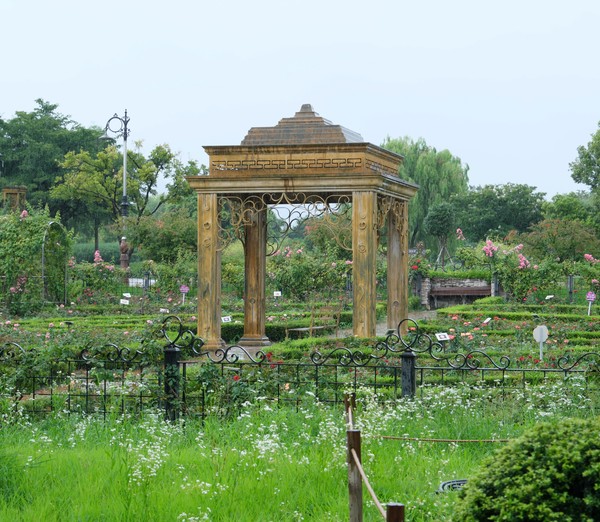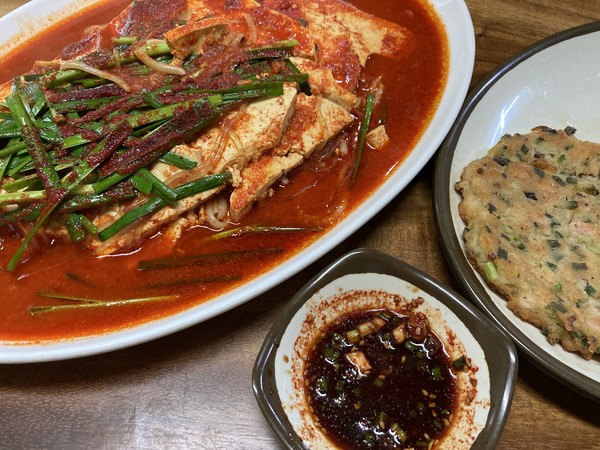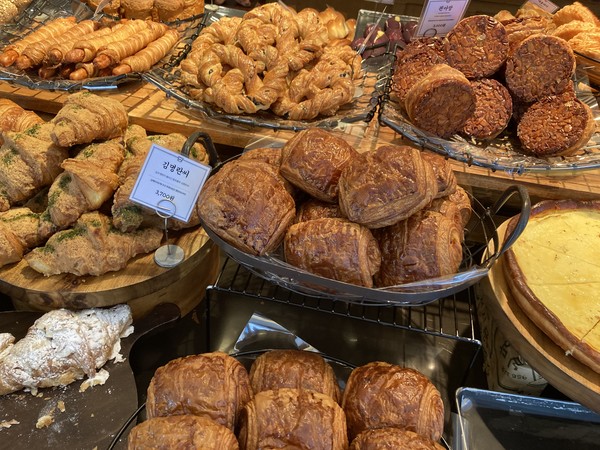Tourism in the rain
DAEJEON-SI IS a city located in the central region of South Korea. While popular for its numerous research institutions, the city also serves as a transportation and administration hub for the country. Even though Daejeon is commonly described as a city that lacks entertainment, my own skeptical outlook on Daejeon was soon washed away by the blissful memories I had made on my trip. By visiting different places in Daejeon and immersing myself in the cultural beauty the city had to offer, I was able to take a break from the hectic lifestyle back in Seoul.
Hanbat Arboretum, the center of horticultural exhibitions

With 19 different themed gardens—including an herb garden, an indoor tropical botanical garden, and a magnolia garden—Hanbat Arboretum[1] is the largest artificial arboretum in Korea. First opened in 2004, Hanbat plays a prominent role in providing horticultural experiences to the citizens of Korea. The arboretum regularly hosts special events and programs, such as the Mu-gung-hwa[2] Experience Program in celebration of the National Independence Day, which provides unique experiences to its participants. The arboretum is largely divided into two areas: the West Garden and the East Garden. The West Garden is full of trees and forests, while the East Garden is occupied by flower themed gardens. Due to the vast size of the arboretum, it is recommended to choose only one area to visit, according to your preferences. You can enter the gardens free-of-charge and the arboretum is open on every day except for Mondays.
In order to visit the Hanbat Arboretum, I took the bus heading to the Government Complex Daejeon Terminal in Seoul, as it only takes a 15-minute walk from this terminal to arrive the destination. Even though it was a rainy day, the parking lot was full of families visiting the arboretum, hand-in-hand.
Before examining the indoor gardens, I decided to take a look around the East Garden. Despite the rainy weather, the laughter of children, the damp air of the forest, and the sounds of raindrops splashing onto the tree leaves immediately freshened my mood. The indoor tropical botanical garden became a perfect shelter from the pouring rain as it was filled with palm trees that formed layers of lush green canopy. The tropical botanical garden is known to house 250 different species of tropical plants, exhibiting an exotic scenery created by the diverse flora’s organic patterns and unique colors.

Byul-nan-jip, an odd restaurant
Byul-nan-jip, which can literally be translated to “an odd house” in Korean, is a local restaurant located near Jung-ang road with over 40 years of history. The interior of the place resembles the settings of many 1980s movies, with faded wallpaper and an old painting of a tiger hanging from the ceiling. Due to its antique interior, the restaurant became the filming location of the famous Korean movie 1987.
“Oddly” enough, the restaurant only has two dishes on the menu. The first dish, made with braised tofu with two types of noodles, is called du bu du ru chi gi[3] and can only be found in Daejeon. The second dish is called nok du ji jim[4], and is a pancake made out of mung beans that Koreans often eat on rainy days. Du bu du ru chi gi had a pleasant kick at the end, while the freshly fried nok du ji jim had a crispy texture that left me craving more. Trying out new local food was a delightful way of getting to know the unique culinary scene of Daejeon.

Jung-ang road, the shopping hub of Daejeon
Jung-ang road is the downtown area of Daejeon, a perfect place to shop and enjoy the vibrant night culture of the city. The streets are filled with gift shops, clothing stores, food trucks, cafés, restaurants, and more, including the famous bakery Sungsimdang bakery. You will also be able to find Daejeon’s largest underground shopping center, where you can purchase trendy outfits, shoes, cosmetic products, and accessories at a cheap price.
Daejeon Sky Road is the main shopping street in the downtown area. Built in 2013, it was named “Sky Road” after the cylindrical display screen structure that acts as a roof for the street. Throughout the day, the screen shelters citizens from the sun or rain, and when the sun sets, it transforms the place into captivating cinema—the dynamic videos displayed on the screen add bursts of color to Daejeon’s night culture, making it a must-visit landmark for visitors to Daejeon.

“Daejeon’s culture, Sungsimdang”
As the final destination of my tour, I visited the renowned Sungsimdang bakery and its cultural center, which are located on the Daejeon Sky Road. Opened in 1956, Sungsimdang is a beloved bakery and a must-visit place when traveling to Daejeon. Its signature product includes fried so-bo-ro[5] and bu-chu[6] bread. Despite the fact that Sungsimdang is famous for its bakery, the brand has been expanding its business through the launch of new shops, such as Sungsimdang Cake Boutique, which focuses on cakes and various confectioneries, and Sungsimdang Ovenstory, which specializes in serving delicious brunch menus.
When I entered the bakery, the slogan “Daejeon’s culture, Sungsimdang” proudly boasted the fact that the store was indeed one of the most beloved brands in Daejeon. In fact, according to a survey, more than 50.5% of university students in Daejeon picked Sungsimdang as the brand that best represented the city[7]. I was pleasantly surprised by the affordable prices of each bread, all of which hardly exceeded ₩3,000 at most.
After visiting the bakery, I got to learn the history of Sungsimdang at the Sungsimdang Culture Space, along with getting to know about its significant presence in Daejeon’s economy and its efforts in becoming an eco-friendly brand. Inside the center, there are upcycled products on sale, such as bags made of flour sacks or fried so-bo-ro shaped soaps made from the sterilized oil used to fry bread. Sungsimdang’s creative ideas and constant efforts to become an eco-friendly brand are simply remarkable—it is no wonder that the bakery continues to be loved by many Daejeon citizens.

* * *
For those who are looking for a nature-friendly destination or are willing to take on the journey of tasting local delicacies, Daejeon will gift you with scenic, vibrant, and delightful memories. Taking a short walk in Hanbat Arboretum, shopping in Jung-ang road, tasting flavorful du bu du ru chi gi, and enjoying Sungsimdang’s appetizing desserts will definitely allow you to spend a perfect laid-back day away from Seoul.
[1] Hanbat Arboretum: An arboretum located in Daejeon-si; An arboretum is a place where different types of plants are cultivated for scientific and educational purposes.
[2] Mu-gung-hwa: Korean for Rose of Sharon, the national flower of South Korea
[3] Du bu du ru chi gi: A local food of Daejeon that consists of braised tofu with noodles
[4] Nok du ji jim: A mung bean pancake
[5] So-bo-ro: A type of bread with peanut streusel on top
[6] Bu-chu: Garlic chive
[7] Daejeon Chamber of Commerce and Industry

